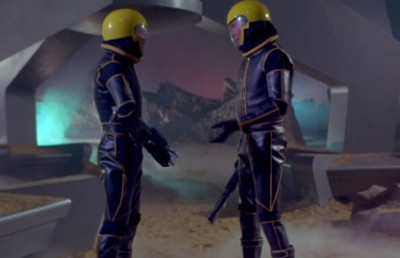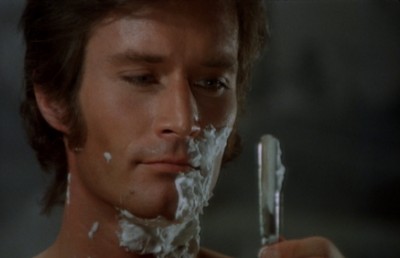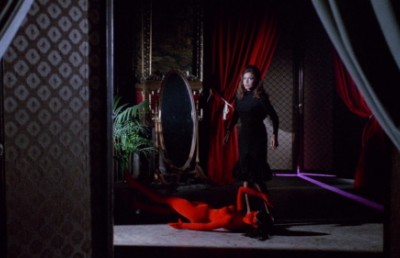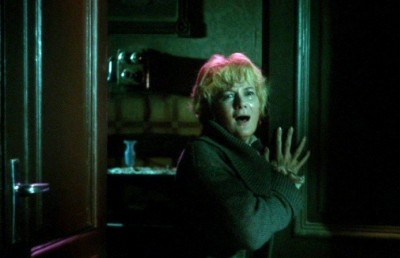One, No One and One Hundred Thousand The “Man Without a Face” in 6 donne per l’assassino and its many incarnations
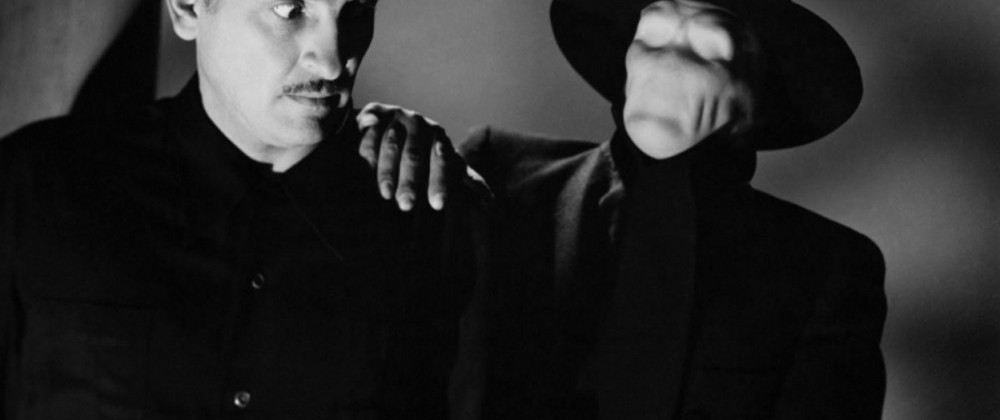
[Note: If you haven’t seen 6 donne per l’assassino, be aware that this essay reveals the murderer’s identity.]
A film with so many intertwined influences and predecessors (both thematic and visual) to allow for surprising discoveries all these years later, 6 donne per l’assassino manages to be truly unique even nowadays. And the same can be said about its blank featureless murderer. Multiple forerunners, and not just cinematic ones, have been pointed out for such a striking and enduring creation, an icon in itself and one of the symbols of the Italian giallo. Crossing and blending in subtle and surprising ways, these references—either blatant or hidden, intended or casual—form a fascinating net that covers a whole spectrum of influences, from popular literature to comics, from celebrated masterworks in film history to obscure genre pictures. The very identity and essence of Bava’s “man without a face” become increasingly complex and elusive the more we try to pin them down. Paraphrasing Luigi Pirandello, it is “one, no one, and a hundred thousand.”
It is common knowledge that the term giallo derives from the successful paperback series I Libri Gialli published in 1929 by Mondadori (which later became simply Il Giallo Mondadori). Bava’s film draws from the iconography and canons of the series in multiple ways, from the main characters’ introduction during the opening credits (which echoes the opening page of Mondadori’s novels, which invariably featured a list of characters) to the Italian fotobuste which reprised the sleeve design of the series—that is, a red circle on a yellow background.
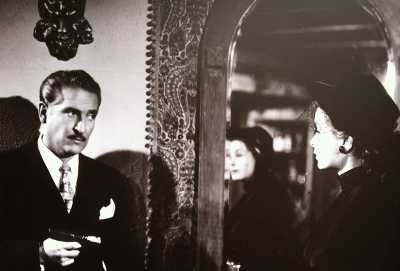
The red circle was originally a reference to Edgar Wallace’s 1922 novel The Crimson Circle, but another Wallace novel stands out when we think of 6 donne per l’assassino’s faceless apparition. The titular character in White Face (first published in Italy in 1933 as issue #67 of I Libri Gialli and regularly reprinted over the years) is an impressive, sinister creation: a man in a white mask who seemingly appears from nowhere and disappears like a shadow, or a ghost. To quote Wallace’s own words, “He came out noiselessly, a dark figure, a black felt hat pulled down over his eyes, his face hidden behind a white mask”.
By the time Bava made his film, the popularity of comic books was reaching a peak in Italy with the diffusion of the fumetti neri (black comics), initiated by Diabolik. The allusion to the color black signaled a darkening of themes compared with the standard detective and adventure stories: these comics delved in amoral behavior (criminality, violence, murder, sexuality) and presented anti-heroes whose features were regularly hidden behind masks. In turn, Diabolik took inspiration from popular literature and serial novels (the so-called feuilletons), with such characters as Rocambole and Fantômas, master thieves and criminals whose capacity to disguise their own appearance and features made them literally “men with thousand faces”—and therefore faceless.
Interestingly, Bava’s film retains a serial-like structure which evokes that of Souvestre and Allain’s Fantômas novels. These were not typical detective stories, but featured a recurring mechanical structure, due to the speed and haste in which the books were written, with both writers sketching one chapter each, which they would dictate to their secretaries: a similar method as Edgar Wallace’s employ of wax cylinders to dictate his novels and a time-saving trick that recalled the haste which often characterized genre filmmaking. Moreover, the attempts to capture Fantômas on the part of inspector Juve and Fandor invariably end with the criminal’s last-minute escape. In 6 donne per l’assassino, the murderer seemingly avoids the claws of justice too. Inspector Silvestri (Thomas Reiner), the film’s homologous to Juve, leaves the stage after an hour, admitting his own defeat. “I could have sworn that the murderer was one of the five suspects we have_…” he blurts out in frustration. “This time they’ve got a really fool proof alibi… I gave it to them!”
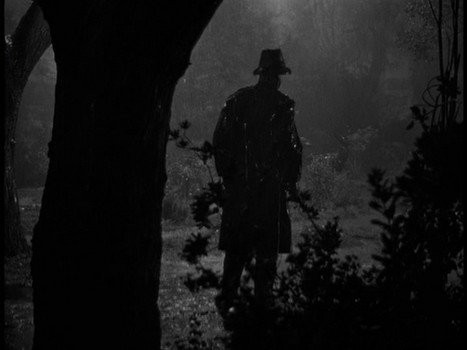
These influences did not pass unnoticed to Italian reviewers of the period: one described the figure as “a mysterious masked assassin like Fantômas,” 1 thus inadvertently tying together two of the more tangible influences, fumetti neri and Surrealism (the likes of Apollinaire, Cocteau and Magritte loved Fantômas).
In fact, the most outstanding (and surprising) forerunners of Bava’s killer are the faceless figures that populate Man Ray’s Surrealist short film Les Mystères du château de Dé (1929). A connection which, even if merely casual, stresses the Surrealist quality of Bava’s work, a debt already evident in the nods to Cocteau’s work—especially La Belle et la Bête (1946) and Orphée (1950)—that turn up here and there in his films. The absence of recognizable features not only gives the murderer the appearance of a dummy come to life, but the implicit denial of humanity recalls the faceless appearances seen in De Chirico or Magritte paintings.
Bava’s intuition is to bring the aesthetic power of this image to its extremes. In fact, the sight of the black-clad murderer, his face concealed by a hat and/or covered with a mask, had long been a recurring visual element in the film noir and horror genre. Think of the following:
In the opening sequence of Michael Curtiz’s The Unsuspected (1947) a mysterious figure with a fedora hat and black leather gloves wanders through a dark house, its shadow looming menacingly on the walls. The intruder enters a room where a woman is on the phone, kills her and stages a fake suicide by hanging. Incidentally, the scene features several surprising details in addition to the murderer’s outfit. The image of the phone dangling after the murder evokes another celebrated shot of 6 donne per l’assassino, whereas the staged suicide recalls the opening demise of Countess Federica (Isa Miranda) in Ecologia del delitto, aka Reazione a catena (1971). Here the murderer does have a face, though, which we only glimpse for an instant, reflected upside-down on the surface of a glass table, but impossible to identify: soon we will learn that it belongs to Claude Rains, the mastermind behind a ruthless murder scheme. Still, the image rings a bell: was Dario Argento aware of it when he conceived the famous “mirror scene” in Profondo rosso (1975)?
Hubert Cornfield’s Plunder Road, a 1957 American film noir characterized by a road movie angle akin to H.G. Clouzot’s 1953 masterpiece Le salaire de la peur, opens with an audacious heist performed on a train which is transporting twenty million dollars in gold ingots. The scene, shot under a pouring rain, is completely devoid of dialogue and the bandits wear similar outfits that strikingly recall that of Bava’s film.
Whereas it is debatable that Bava actually saw Les Mystères du château de Dé (but he might have come across pictures of it: there was a Surrealist exposition in Rome in 1959, with works by Man Ray, Magritte, Ernst, and others) and probably skipped such a minor low-budget flick as Plunder Road, it is very likely he saw The Unsuspected, the work of a prominent Hollywood director which came out in Italy under the alluring title L’alibi di Satana (Satan’s Alibi). But what about a little-known Mexican film directed by Juan Bustillo Oro, El hombre sin rostro (1950)?
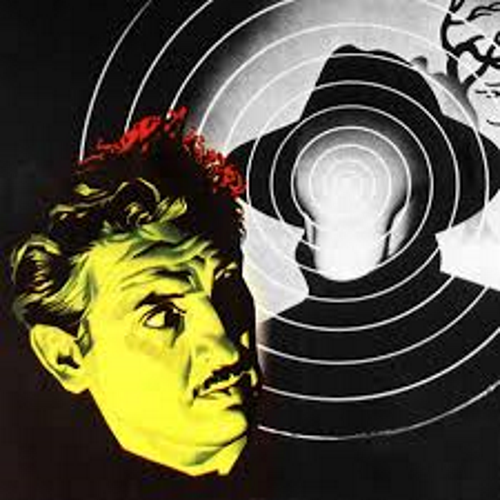
As Bava scholar Alberto Pezzotta—the first to write an essay analyzing the similarities between the two films—argued 2 , El hombre sin rostro had a regular theatrical distribution in Italy (as L’uomo senza volto) after its screening at the Venice Festival, the same day as John Huston’s The Asphalt Jungle 3 . Moreover, with the horror film boom of the early 1960s, several Mexican titles were distributed nationally 4 , possibly causing some distributor to rerelease Bustillo Oro’s film in some second or third-run venue, following the same destiny of many “B” films which circulated even decades after their initial run.
In the opening sequence of El hombre sin rostro, a man named Juan Carlos—played by noted Mexican actor Arturo de Córdova—emerges in an eerie, otherworldly studio-bound landscape of barren trees, mist and puddles and walks toward the camera. He sits on a lonely bench, surrounded by fog and with a single skeletal tree ominously looming in the background. He then notices a funeral procession passing by, with hooded figures carrying coffins and torches while humming a solemn chant. A female voice informs the man that “Those are his victims … All of them died under his cruel claws.” A middle-aged woman advances, warning him that “many more will be added to the funeral procession if you don’t stop that insatiable murderer.” She urges Juan Carlos to “search for him all over the world, find him and kill him with your bare hands” and then points in the distance. “Look! The time has come! There’s the murderer!”
The scene has a striking impact to Bava’s fans, for it includes some of the director’s visual trademarks and inspires analogies with his work. If the sight of De Córdova advancing toward the viewer instinctively recalls Boris Karloff’s appearance at the beginning of I tre volti della paura, the eerie funeral procession evokes the opening of La maschera del demonio. Moreover, the practice of filling virtually empty studio-bound sets with artificial fog is a typical Bava trick to save on the budget and create a Fantastic mood: see the alien environment of Terrore nello spazio (1965).
But what follows is even more impressive. A figure, seen from behind, is walking in a fog-shrouded path lined with surreal street lamps. He wears a black coat and hat. Juan Carlos follows him and shoots him. The figure, apparently wounded but still standing, leans on a street lamp as the shooter approaches. Once he has come close, we hear the woman’s words: “Finally, you’ll see his face. What’s his face look like, how’s the look in his eyes?”. As Juan Carlos looks at the man, a counter shot finally shows the murderer’s features. As the latter slowly raises his head, we can see that he literally has no face, for his features are covered by a mask that makes him look like a De Chirico mannequin. The murderer from 6 donne per l’assassino finds here its most striking and close forerunner, for the Surrealist quality of the figures in Les Mystères du château de Dé meets with the film noir element of the outfit (even predating what previously seemed the most blatant inspiration, André De Toth’s 1953 3-D horror classic House of Wax).
Actually, Bustillo Oro’s killer is even more perturbing and almost non-human, a monster from the Id who took a vaguely human form. There is a reason for that: as we will eventually discover, Juan Carlos himself is the serial killer who slays prostitutes and other ladies of dubious virtue, plagued by an unresolved Oedipal complex and a morbid affection for the memory of his deceased mother, who forbad him to marry the girl he loved and kept him tied to her apron until she died, prompting his mad hatred for all “immoral” women (when he sees his maid kissing her fiancé, he calls her a whore and fires her on the spot; later, he stalks and kills the poor girl). This, incidentally, gives further resonance to the scene when compared with Bava’s work, for the moment where Juan Carlos comes face to face with his masked alter ego evokes a similar scene in Operazione paura (1966) where Giacomo Rossi Stuart’s character meets his own evil double. Later, during one of Juan Carlos’ nightmares, Bustillo Oro films a spiral staircase from a zenithal position, another shot which immediately evokes one of Operazione paura’s most celebrated shots.
The psychoanalytical nature of El hombre sin rostro has interesting implications. Bustillo Oro told in his memoir that the idea for the film—which vaguely takes inspiration from the deeds of a real-life serial killer, Gregorio “Goyo” Cárdenas Hernández, who slaughtered prostitutes in Mexico City in the 1940s—originated in 1923, after a psychoanalysis class on Stevenson, Freud, Jung, Adler and Kraft-Ebing taught by noted Mexican philosopher Samuel Ramos. The director wrote that “Freud’s ideas… brought back to me with a renewed intensity the horror I felt at the end of my childhood when I saw The Strange Case of Dr. Jekyll and Mr. Hyde, the Danish film based on Stevenson’s novel.” 5 Besides the similarities with Hitchcock’s works—a man tortured by inexplicable nightmares as in Spellbound (1945); a domineering mother who injects in her son a murderous hatred for women, as in Psycho (1960)—, El hombre sin rostro is much more interesting in the way it sheds light on the misogyny of the Mexican average male, something Luis Buñuel would explore in two of his Mexican masterpieces, Él (1953, also starring De Córdova) and Ensayo de un crimen (aka The Criminal Life of Archibaldo de la Cruz, 1955). Did Buñuel see Bustillo Oro’s film? It might well be.
In turn, 6 donne per l’assassino shares the same surrealistic taste as Ensayo de un crimen. Archibaldo de la Cruz compares the woman whom he plans to kill, Lavinia, with a mannequin which reproduces her features and, once his homicidal plan is frustrated, acts as a surrogate “death doll”: Archibaldo drags it—involuntarily removing a leg in the process—to an incinerator where he will burn it. When he made 6 donne per l’assassino, a film in which human beings and mannequins are ultimately interchangeable, Bava had not yet seen Buñuel’s film, for the latter came out in Italy only at the end of 1964; still, Dr. Goldfoot and the Girl Bombs, the U.S. cut his 1966 spy spoof Le spie vengono dal semifreddo features a bizarre scene where a female robot (Laura Antonelli) ends up dismembered like one of Archibaldo’s mannequins. Just a coincidence? Shades of Ensayo de un crimen’s protagonist can indeed be detected in the traumatized, impotent and necrophile John Harrington (Stephen Forsyth) in Bava’s Il rosso segno della follia (aka Hatchet for the Honeymoon, 1970), scripted by another Spaniard, Santiago Moncada and imbued with Freudian touches.
But for all these similarities, one key difference stands out. Bustillo Oro and Buñuel’s films are deeply imbued with psychoanalysis; on the other hand, Bava sneeringly sabotages any attempt at it. In El hombre sin rostro the impossibility to detect the murderer’s features (“You’ll never see that face_,” Juan Carlos’s mother tells him) alludes to a mental block, the protagonist’s incapability to confront his split personality. In fact, the “man without a face” inhabits only his dreams, and not reality, where Juan Carlos kills prostitutes with a scalpel and dresses in black coat and hat but doesn’t wear any mask.
The murderer in 6 donne per l’assassino, in turn, looks like a nightmare come to life. He appears and disappears at will, moves inexplicably from one place to the next, and his powers seem beyond human. In the scene of Nicole’s murder in the antique shop, he turns up in different parts of the premises, as if defeating the laws of space; then, as the lights flash to dark, turn up and down again, the figure disappears: in the next flash of light, the room is empty, as if it had dissolved into thin air. Still, soon after his crimes, the killer seems to lose part of his powers: leaving the scene of the crime in Nicole’s vehicle, he wastes precious time to turn off a car alarm—not to mention that he does not disappear like a ghost but employs a definitely practical means of locomotion.
Bava’s murderer is faceless but not asexual: the snub nose gives him a prizefighter profile and his simian postures echo the bloodthirsty primate in Poe’s short story The Murders in the Rue Morgue. Even though not explicitly sexual, his deadly assaults have an erotic element in them, resulting in the victims having their clothes partially torn off, or their skirts raised to expose their thighs, in a display of female lingerie which pairs with a tendency to disfigure their faces cruelly. And yet, in the end, even this array of Freudian hints is sabotaged, for the murderer is revealed to be two individuals, a man and a woman—Morlachi (Cameron Mitchell) and his lover Cristiana (Eva Bartok)—who take turns killing, in a twist that ridicules inspector Silvestri’s attempt at reading the murders as psychosexual acts:
“He must have been a madman.”
“Or a sex maniac in a homicidal fury…”
“…Against beautiful women!”
“Yes… Perhaps the sight of beauty makes him lose control of himself and kill. We’ll have to start all over again.”
Silvestri’s admission of defeat (or, well, impotence) can be interpreted in Freudian terms too, but what Bava had in mind was certainly not a psychoanalytical thriller. In fact, 6 donne per l’assassino proceeds systematically to contradict and sneer at the “rules of the game” inherent to the mystery genre, including the motivations behind the murders—which, for a work generally considered to be the initiator of Italian giallo, is not something to dismiss lightly.
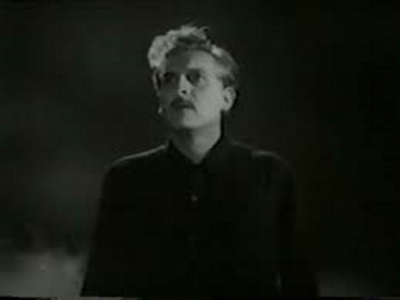
And yet, a film so derisive about motivations—the killings take place to cover a squalid story of blackmail, the characters are interested only in material and superficial items—manages to tell us something about the time and place it was made: early 1960s Italy. A nation which under its glamourous and stylized surface, is not so dissimilar from the retrograde environment depicted by its counterparts. A nation where, despite the undergoing transition in social mores, sexuality was still seen as something taboo and “dirty”, and where the demand for sex resulted in a large part of Italian popular cinema attempting to take advantage of the relaxation of film censorship, in an escalation which would accelerate drastically by the end of the decade. A nation where a man could have all the women he liked, but if a woman went to live with a man without being married she was labeled a whore: when Greta (Lea Krüger) introduces Marquis Morelli (Franco Ressel) as her fiancé, the gossipy Cesaretto (Luciano Pigozzi) comments mischievously: “They live together!” A nation where it was a sin to live together outside marriage yet divorce was still not an option (it would be introduced by law only in 1970), resulting in a “divorce—Italian style” (the killing of Cristiana’s husband) which provided the starting point of the ill-fated blackmailing and subsequent murders. The bitter sting in the end is that Massimo and Cristiana are ultimately an unhappy couple like so many others in Italian cinema of the period, from Antonioni’s “trilogy of the incommunicability” to Riccardo Freda’s L’orribile segreto del Dr. Hichcock and Lo spettro —not to mention the open sneer of Elio Petri’s La decima vittima (aka The 10th Victim, 1965), where the battle of the sexes turns into a mocking game of death. It is no wonder, then, that the film’s celebrated final shot focuses on an inanimate object rather than on the human protagonists.
Such a bleak worldview, which not even the gorgeous color and elaborate camerawork on display can conceal, will imbue many of Bava’s subsequent works, most notably Ecologia del delitto (aka Bay of Blood, 1971) and Cani arrabbiati (Rabid Dogs, 1974). Here, for the first time in his filmography, it seems that the director’s main goal is “to eliminate the human element from his stories,” as film historian Teo Mora argued. Whether Bava’s was “a moralist’s bitter metaphor of a mean and selfish humanity that he despises” 6 or his cinema was merely a playful stage for naughty feelings he didn’t wholly endorse, is debatable. But 6 donne per l’assassino’s faceless entity, a blank slate that becomes the projection of the audience’s desires and behind which anyone could hide, perfectly captures the essence of the crime genre as described by Cameron McCabe (aka Ernest Bornemann) in his novel The Face on the Cutting Room Floor, that is, “chess played with figures that look like human beings—but they only look like humans: they aren’t.” 7
Notes
- U.C. [Ugo Casiraghi], “6 donne per l’assassino”, L’Unità, 26 June 1964. ↩
- Alberto Pezzotta, Chi è Juan Bustillo Oro e cosa c’entra con Mario Bava?, “Film TV”, 26, 30 June 2020 ↩
- Arturo Lanocita, “Anche i ladri hanno l’anima nel film ‘Giungla d’asfalto’”, Corriere della Sera, 24 August 1950 ↩
- Fernando Mendez’s El vampire and El ataud del vampire came out in Italy in 1959 and 1960, respectively, whereas Miguel M. Delgado’s Los misterios de la magia negra was released in 1963. ↩
- Juan Bustillo Oro, Vida cinematográfica, 268. The Mexican director refers to Den skæbnesvangre opfindelse (1910, August Blom), starring Alwin Neuß as Jekyll. ↩
- Teo Mora, “Mario Bava. Il visionario filmico,” in Claudio Bertieri and Marco Salotti (eds.), Genova in celluloide. I registi liguri, Comune di Genova — Assessorato alla cultura, Genoa 1984, 204. ↩
- Cameron McCabe, The Face on the Cutting-Room Floor, Picador / Pan Macmillan, London (1937) 2016. ↩



